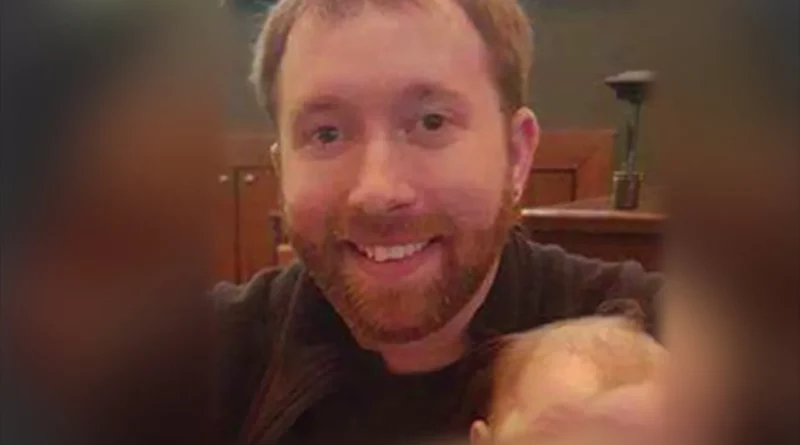Kobi Walden Killed in Indianapolis Indiana
Kobi Lee Walden was born and raised in Indianapolis, Indiana, the eldest of three siblings in a close‐knit family. From an early age he exhibited both creativity and compassion, talents he wove into every aspect of his life. After attending local schools, he found work managing a retail store but also nurtured his love of performance and teamwork through involvement in the city’s roller‐derby community and the Indy Pride Band. As Coach Number 47 of the Race City Rebels, he mentored new skaters, organized practices, and celebrated each small victory with an infectious grin. Friends recall him arriving early to help set up the rink, teaching complex footwork to teens on the team, and staying late to cheer on beginners until they landed their first crossovers. In his free time, he visited his four young nieces, sharing with them his two greatest passions—Star Wars marathons and homemade sushi rolls.
The Apartment Complex and Neighborhood
Southport Crossing Apartments sat on the city’s south side just off U.S. 31, a stretch that combined busy commuter traffic with rows of modest garden‐style buildings. Residents described the complex as generally quiet, with neighbors greeting one another in the courtyard and children playing in twilight. The parking lot consisted of long asphalt lanes with vehicles aligned in neat rows, punctuated by landscaped islands and exterior stairwells leading to second‐floor units. Security lighting hovered above, casting pools of pale yellow on concrete walkways, while small clusters of trees provided both greenery and concealment. Although occasional disturbances occurred—as they often do in any urban setting—most residents felt safe returning home after dark. Kobi, living on the ground floor, often walked to his car at night with other tenants, exchanging hellos and reminders to lock doors. His routine visits to Kroger’s, a half‐mile up Southport Road, were so regular that the checkout clerks would often set aside items he favored—protein shakes, paper towels, and the occasional pint of ice cream.
The Evening of May 1, 2017
On the evening of May 1, 2017, Kobi returned from roller‐derby practice at the local rink, still wearing his protective knee pads under cargo shorts. He texted his sister around 9:45 p.m. to let her know he was stopping by Kroger’s on his way home. Security‐camera footage later confirmed he arrived at the grocery store at 9:55 p.m., where he loaded groceries into his silver sedan and chatted briefly with a clerk about an upcoming bout. By 10:15 p.m., Kobi was back in the apartment‐complex parking lot, climbing out of his car with two reusable bags in one hand and a duffel bag slung over his shoulder. He waved to a neighbor unlocking her door, then began unloading the groceries near the driver’s‐side door—an action he often performed to clear space before locking up.
The Gunshots and Initial Response
At approximately 10:03 p.m., the quiet hum of the parking lot was shattered by a series of sharp pops—five distinct gunshots in rapid succession. Several neighbors inside their apartments heard the noise but assumed it was fireworks or a car backfiring. One tenant even texted a friend about the “weird boom sounds” and joked it might be someone celebrating Cinco de Mayo early. Meanwhile, apartment staff received calls reporting the bangs, prompting a maintenance worker to walk the lot with a flashlight. He found nothing: no vehicle idling suspiciously, no injured person, and no visible shell casings where the shots had reportedly sounded. Concluding the calls were unfounded, the worker returned to his office and made no formal report to police. At the same time, the apartment’s exterior cameras—positioned high on corner walls—did not capture any obvious disturbance or moving figures; whether due to blind spots or the speed of events, their footage showed only the empty lot bathed in lamplight.
Discovery of Kobi’s Body
The following morning at around 11:45 a.m., a group of teenagers fishing for minnows behind the complex near the creek stumbled upon a figure partially concealed by brush. As they approached, they realized the body was human. Police were called immediately, and officers quickly identified the victim as Kobi Lee Walden. He lay face‐up on uneven ground pooled with dew, dozens of yards from where he had unloaded his groceries the night before. The two grocery bags and duffel rested neatly by his right side, contents intact but intermixed with mud and foliage. His wedding ring, cell phone, and wallet were missing; sweatpants replaced his usual cargo shorts, suggesting his attacker may have forced him to change or that he attempted to flee in comfort. A swift perimeter search uncovered no additional evidence, and the discovery scene was secured for forensic specialists.
Forensic Examination and Ballistics
Crime‐scene technicians cataloged every detail with meticulous precision. They collected five spent 9 mm shell casings from beneath a small copse of trees roughly twenty feet from where Kobi’s body lay. Ballistic analysis later matched the casings to a Glock‐style weapon, though no firearm was ever recovered. Blood spatter patterns indicated Kobi had been shot multiple times from close range, consistent with an execution‐style encounter rather than a random drive‐by. Autopsy findings corroborated this: entry wounds in the torso and upper thigh showed the assailant fired while standing over him, and defensive wounds on Kobi’s hands and forearms suggested he raised his arms to shield himself. Toxicology reports ruled out intoxicants, affirming that he was fully conscious at the time of the attack. Soil and plant matter embedded in the duffel bag’s straps revealed transfer from a different section of the creek bank, indicating the body may have been moved post‐mortem before being left in its final position.
Initial Police Investigation
The Indianapolis Metropolitan Police Department launched a homicide investigation within hours of the discovery. Detectives canvassed the apartment complex and neighboring blocks, posting flyers, interviewing dozens of residents, and reviewing hours of CCTV footage from surrounding businesses. K9 units scoured wooded areas for scent trails but lost them where terrain merged with a cluster of maple trees. Investigators cataloged cell‐tower records to track phone pings from Kobi’s device, pinpointing his last outgoing call at 10:05 p.m. to a friend who never answered. Witnesses recalled seeing a dark sedan parked behind Kobi’s car around that time, though descriptions varied widely—some remembered taillights shimmering red, others noted no license‐plate. Without a firm lead, detectives identified two persons of interest: a transient man known to frequent the creek bank and a former co‐worker dismissed after a workplace dispute with Kobi. Both were interviewed and cleared for lack of evidence, but their names remained in the case file should new information emerge.
Community Response and Memorial Efforts
News of Kobi’s death rippled through Indianapolis’s sports and arts circles. Roller‐derby teams wore black armbands bearing his number during the next series of bouts. The Indy Pride Band dedicated its annual concert to his memory, playing selections from his favorite Star Wars soundtrack with a brief eulogy before each piece. His sister, Kala Klein, organized candlelight vigils at the complex entrance, inviting residents to share stories of Kobi’s kindness. Graffiti artists painted murals of his likeness on plywood boards that lined a vacant lot near the creek, each image capturing his radiant smile. In August 2019, friends and family leased a billboard on U.S. 31 just off I-465, emblazoned with Kobi’s photograph, the question “Who killed Kobi Lee Walden?” and the Crime Stoppers tip line—an effort that generated dozens of phone calls and renewed media attention.
Cold‐Case Initiatives and Forensic Advances
As years passed with no arrest, the case transitioned to a dedicated cold‐case unit. Detectives periodically re-interviewed witnesses, applied cognitive-interview protocols to elicit forgotten details, and leveraged social‐media campaigns under hashtags like #JusticeForKobi. In 2021, forensic scientists employed touch-DNA analysis on the duffel bag’s straps, recovering partial profiles that entered the national database. While none produced a match, the profiles remain on file for future comparisons. Additionally, sonar sonar scans of the adjacent creek bed sought to locate the missing weapon or additional evidence; these scans identified metal fragments that are now undergoing microscopic examination to determine their origin.
Theories and Unanswered Questions
Multiple theories have surfaced over the years. Some investigators believe robbery was the primary motive: Kobi’s personal valuables—ring, phone, wallet—were missing, and his grocery bags lay untouched. Others posit a more personal attack: the proximity to his car and the methodical placement of his belongings suggest the assailant may have known him, staging the scene to send a message. There is also speculation the transient man spotted near the creek bank could have witnessed the crime or participated in it. The absence of any drag marks between the lot and the creek bank hints that the body may have been carried or transported, raising questions about whether a second vehicle was involved. At least one tipster described a heated argument heard near a ground‐floor balcony just minutes before the shooting, but no one has come forward to corroborate that account.
Impact on Indianapolis and Ongoing Hope
Kobi’s murder left a palpable void in the community he served so passionately. Yet his legacy endures through scholarship funds created in his name for underprivileged youth, helping them access sports and arts programs he once championed. Roller-derby leagues hold annual tournaments dedicated to his memory, raising funds for Crime Stoppers and local violence-prevention initiatives. His sister continues to meet regularly with detectives, offering moral support and keeping the case at the forefront of public consciousness. Each anniversary of his death brings renewed calls for justice, reminding Indianapolis that unsolved homicides reverberate long after headlines fade. Investigators remain committed to pursuing every lead—no matter how small—until someone is held accountable.
Discover more from City Towner
Subscribe to get the latest posts sent to your email.




